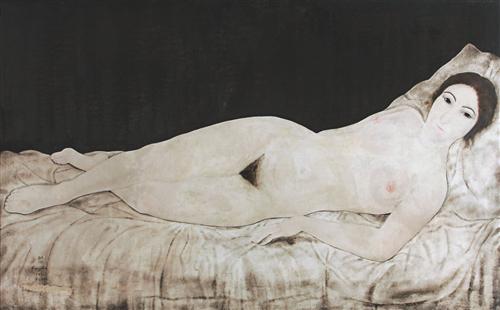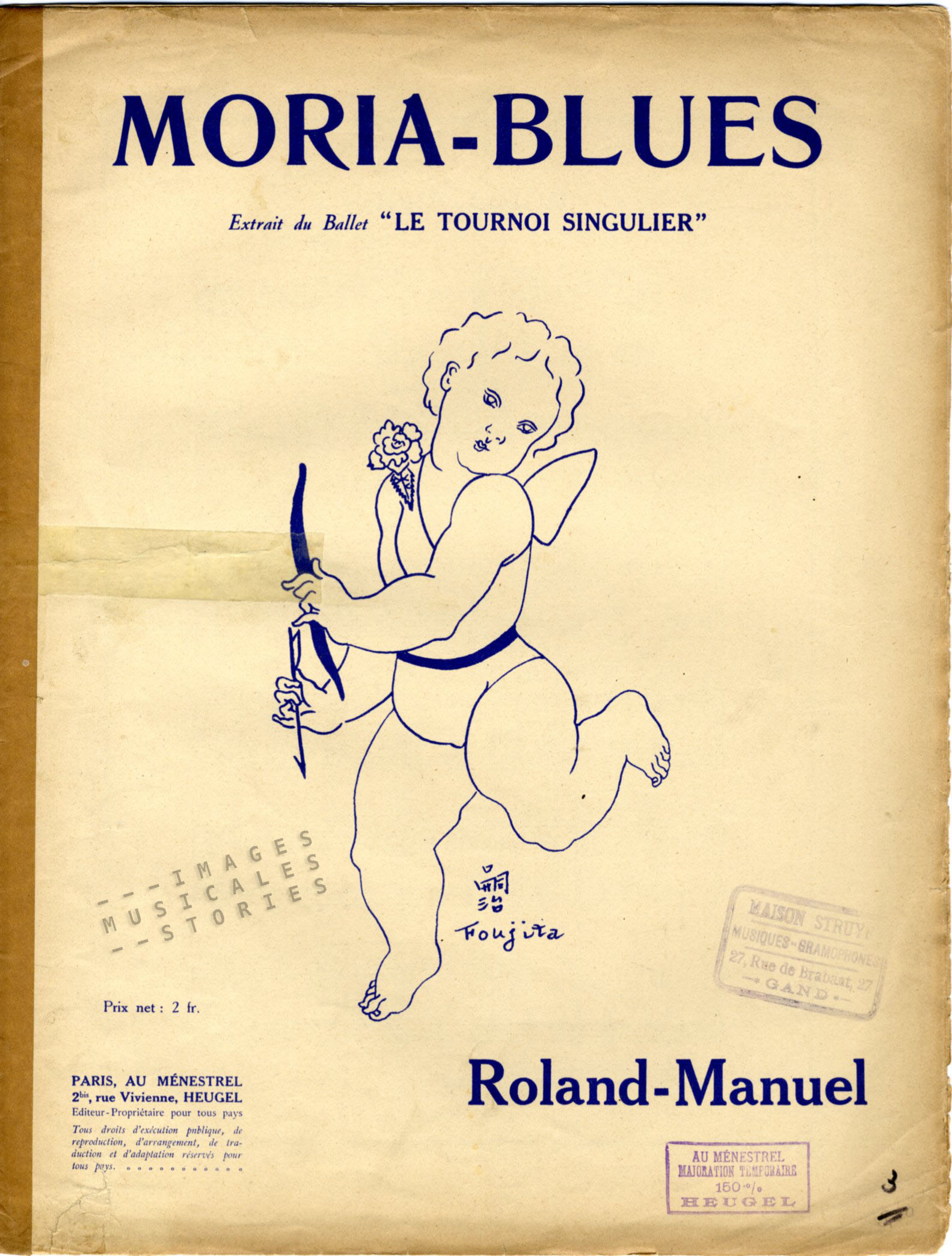
During the Twenties Foujita earned a lot more as a painter than his friends Picasso and Matisse but unlike them, he is now almost completely forgotten. His paintings are easily recognisable by the use of a self-mixed and pearlescent white paint (blanc de lait) and subtle contours in black ink. He bridged the gap between Eastern and Western art in his narrative works executed in a clear, pen-like flowing line.
In our collection we have two covers illustrated by Foujita: Sept Haï-kaïs and Moria-blues.

The Japanese Foujita was an obvious choice to illustrate the seven haiku poems set to music by Maurice Delage in 1924. Delage, who spoke fluent Japanese, translated the haikus himself in French and captured the mood of the poems with impressionistic and exotic-colored music. Foujita’s illustration for the piano and voice version of the Sept Haï-Kaïs, teases our brain with an optical illusion of sumo wrestlers.

Moria Blues is from the ballet Le Tournoi Singulier (1924). Apart from the drawing of Cupid, Foujita also realised the stage sets and costumes. The Ballets Suédois, an avant-garde company for which also Nerman had created designs, performed Le Tournoi Singulier in Paris. Roland-Manuel composed the music. The story is kind of absurd: while reading a Parisian newspaper, the mythological Eros (Cupid) daydreams of lady-golfers in boxer shorts. La Folie (Folly) hits Eros in the eye with a golf ball and blinds him. But Venus comes to the rescue and punishes La Folie. The mixture of sport and mythology was used to juxtapose classical and modern styles. La Folie was musically composed with a fashionable jazzy blues rhythm and performed with a jazzy dance while Eros was represented as a Greek athlete.
The critics prefered the music that was, according to them, a pleasant composition influenced by Debussy, to the decorations and costumes that suffered from dada-ized japonism.

mais où vont ils chercher tout ça???!!!!
Bravo les chercheurs infatigables , je vous envie et vous admire !